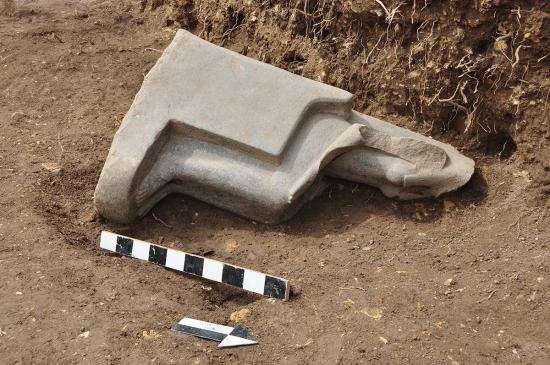Ministry of Antiquities
Source - https://www.facebook.com/Ministry-of-Antiquities-336764893195328/
 A group of 8 statues of the goddess Sekhmet in black granite was discovered by the members of “The Colossi of Memnon and Amenhotep III Temple Conservation Project” directed by Hourig Sourouzian.
A group of 8 statues of the goddess Sekhmet in black granite was discovered by the members of “The Colossi of Memnon and Amenhotep III Temple Conservation Project” directed by Hourig Sourouzian.
Six of the statues represent the lion-headed goddess seated on a throne and holding a symbol of life in her right hand. Among them three are almost complete, one upper part, and two others are lower parts.
 The maximal height is 1,90m, the width 0,51m and the depth 1,00m.
The maximal height is 1,90m, the width 0,51m and the depth 1,00m.
Two other middle parts of statues represent the goddess in standing attitude. They are headless and the lower parts are missing. The goddess is depicted holding a papyrus scepter in the left hand and a life symbol in the right.
 Sekhmet, “the Powerful” is a mighty solar goddess who protects the Sun-King in his ‘temple of millions of years’, like she protects the Sun-God Rê by repelling his enemies.
Sekhmet, “the Powerful” is a mighty solar goddess who protects the Sun-King in his ‘temple of millions of years’, like she protects the Sun-God Rê by repelling his enemies.
Many similar statues have been discovered in the temple of Amenhotep III during the past seasons. They were all surrounding the large peristyle court and the hypostyle hall of the vast temple. Each statue is a masterpiece of sculpture, combining the head of a lion with the body of a woman wearing a tripartite wig and a long tight fitting dress.
 All these statues, when cleaned, desalinated, and fully documented, will put on display in the temple when the site will be opened to the visitors after being completely protected by a fence and secured.
All these statues, when cleaned, desalinated, and fully documented, will put on display in the temple when the site will be opened to the visitors after being completely protected by a fence and secured.
Beside the divine statues the team also discovered the middle partof a headless royal statue in black granite, representing Amenhotep III standing, wearing a jubilee cloak. Height 0,77m, width 0,56m.
Two similar statues discovered in the temple a century ago are now kept in the Egyptian Museum .